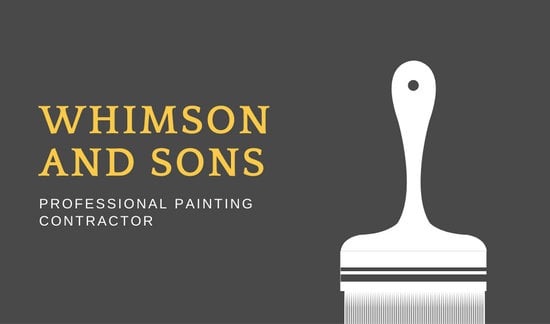Discover How Seasonal Impacts Can Affect The Performance Of Commercial External Paint And Find Out The Most Desirable Times To Make Sure Long Lasting Results For Your Project
Discover How Seasonal Impacts Can Affect The Performance Of Commercial External Paint And Find Out The Most Desirable Times To Make Sure Long Lasting Results For Your Project
Blog Article
Authored By-Doherty Bagger
When you're planning a business exterior painting project, seasonal factors can make or damage your outcomes. You'll wish to think about how temperature and moisture influence paint application and drying out times. Selecting the right season can ensure your paint sticks properly and lasts longer. Yet which painter needed near me are absolutely the best for this type of job? Allow's discover the crucial elements that can influence your task's success.
The Effect of Temperature Level on Paint Application
When you're preparing a commercial external painting job, the temperature level can considerably impact exactly how well the paint adheres and dries out.
Ideally, you wish to repaint when temperatures vary between 50 ° F and 85 ° F. If it's as well cold, the paint might not cure appropriately, bring about problems like peeling or fracturing.
On the flip side, if it's as well hot, the paint can dry out as well promptly, stopping appropriate adhesion and causing an unequal surface.
You should likewise think about the time of day; early morning or late afternoon uses cooler temperatures, which can be more favorable.
Always inspect the supplier's suggestions for the certain paint you're utilizing, as they usually give advice on the perfect temperature variety for ideal outcomes.
Moisture and Its Impact on Drying Times
Temperature level isn't the only environmental element that affects your industrial exterior paint job; moisture plays a considerable role also. High humidity degrees can slow down drying out times substantially, influencing the total quality of your paint task.
When the air is saturated with wetness, the paint takes longer to treat, which can lead to issues like poor adhesion and a greater danger of mildew growth. If you're repainting on an especially moist day, be gotten ready for prolonged delay times in between coats.
It's essential to monitor neighborhood climate condition and plan accordingly. Ideally, aim for humidity levels between 40% and 70% for optimum drying.
Keeping these factors in mind guarantees your job remains on track and delivers a lasting coating.
Best Seasons for Commercial Outside Painting Projects
What's the very best time of year for your business outside paint jobs?
Spring and very early fall are commonly your best bets. Throughout these periods, temperature levels are light, and moisture levels are commonly lower, creating ideal conditions for paint application and drying.
Prevent summer's intense heat, which can cause paint to dry too quickly, leading to bad adhesion and surface. Similarly, winter's cool temperatures can hinder appropriate drying and healing, running the risk of the longevity of your paint work.
Aim for days with temperatures between 50 ° F and 85 ° F for optimal outcomes. Keep in mind to check the local weather forecast for rainfall, as wet conditions can destroy your task.
Planning around these elements ensures your painting job runs efficiently and lasts much longer.
Final thought
Finally, intending your commercial external painting projects around seasonal considerations can make a considerable distinction in the result. By scheduling work during the suitable temperature levels and humidity degrees, you'll make sure far better bond and drying out times. Remember to keep an eye on local weather prediction and pick the correct time of year-- springtime and early autumn are your best bets. Taking just click the following web page will help you attain a sturdy and specialist coating that lasts.
